Sussex nature
Celebrate sixty years of Sussex through highlights of our on-campus nature and wildlife.
Wild flowers
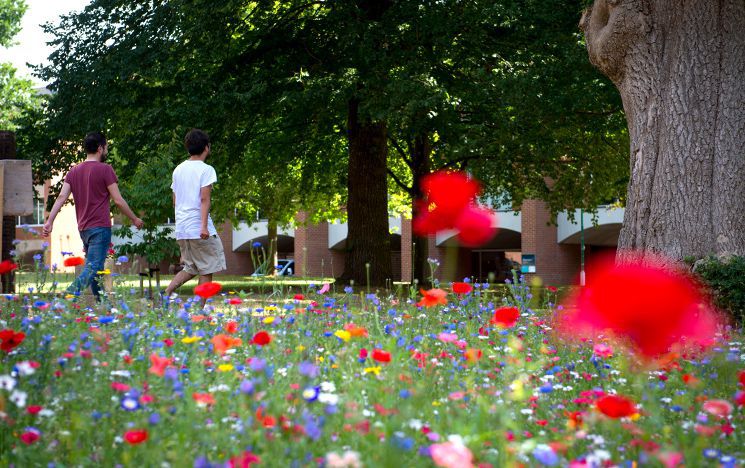
More than 60 per cent of campus is ‘green’, but today it looks rather different to Sir Basil Spence’s original manicured lawns of the 1960s.
A drive towards making the campus more biodiverse has resulted in much of the grass being turned into wildflower beds, or left to revert to its chalk downland state.
The first wildflower bed was introduced by our honey bee researchers in 2013 to encourage pollinators. Now Sussex Estates and Facilities are responsible for managing the grasslands on campus and have created dedicated sections for different habitats and plants; from downland meadow areas for natural local species to thrive, to beds for bee orchids and white helleborine.
The elm
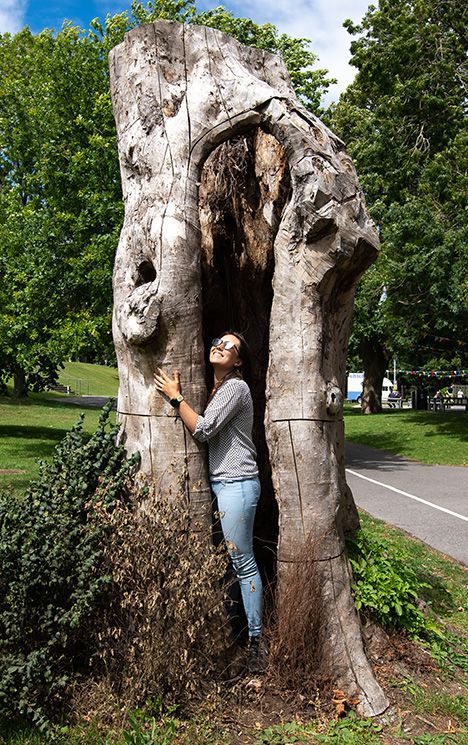
A hollow stump is all that’s left of an elm that succumbed to Dutch Elm disease. It was pruned in February 2019 to prevent the disease spreading to our rare population of 31 English elms, 22 of which have been classified as mature.
More than 1,200 trees grow on the University’s 200-acre estate, creating a living, breathing, beautiful canopy. Dozens of varieties, from ancient yews to Indian bean trees and a fruit-bearing mulberry tree (planted by our first Vice-Chancellor Lord Fulton), thrive in the Sussex soil.
During the University’s diamond jubilee year, 60 trees are scheduled to be planted. Most are indigenous fruit trees, providing food for wildlife (if not, hungry students). Many other memorial trees are also scheduled to be planted – adding to the 400 that already commemorate people associated with the University.
Boundary walk
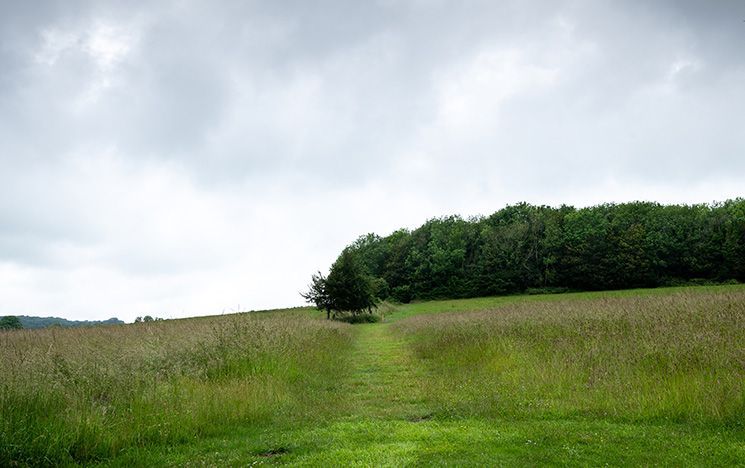
You can stroll it, stomp it, run it, and even race it. The Boundary Walk [PDF] is the name given to a path that encircles campus.
Established in 2006, the 2.4 mile route takes you past badger setts, ancient trees in woodland, and high up onto the Downs at the northern end of campus – where you get a glorious view of Sussex and a distant glimpse of the sea.
It takes about 45 minutes to walk and 30 minutes or less to run (for many years the University has held a Boundary Run challenge). It is one of several walks that students and staff are encouraged to enjoy as part of our wellbeing strategy. And with the University bordering the South Downs National Park, many even venture further afield.
Dew pond
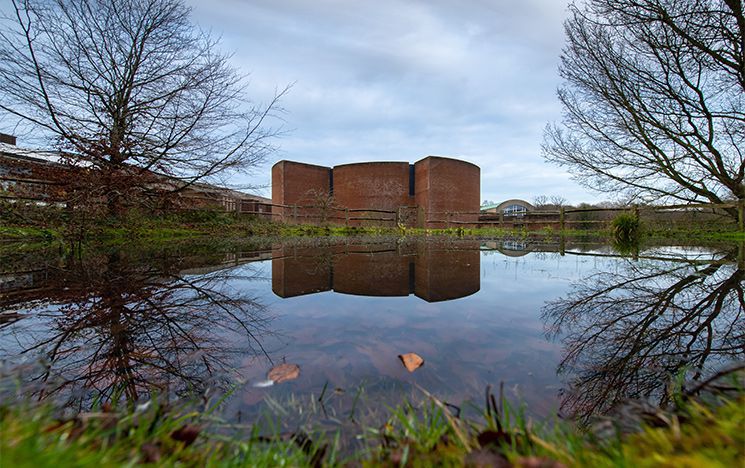
Dewponds are a traditional feature of the Sussex countryside for keeping livestock watered. The University’s dewpond, which is to the west of the Attenborough Centre, was dug in 2005 and funded by money allocated for environmental improvements after the building of the Medical School.
Although cattle and sheep aren’t invited to drink here, it does support breeding frogs, dragon flies, migrating birds and other wildlife. It’s also a peaceful place to eat your lunch.
Other watery spaces on campus include the moats within Falmer House – only filled on special occasions – and around the Meeting House. There’s also a lily pond in Arts A quadrangle, a goldfish pond next to the Attenborough Centre, and a hidden-away pond in the Woodland Walk by Boiler House Hill.
Badger
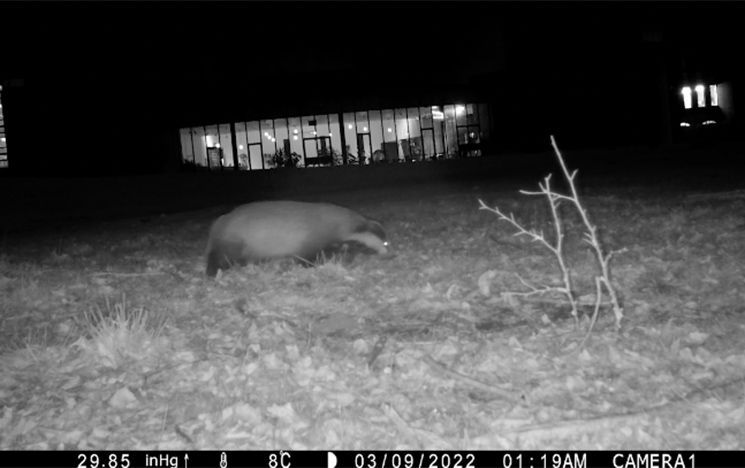
Apart from humans, the mammal species most synonymous with the University of Sussex is the badger. Their setts are found in the woodland areas that surround the campus, and, although not as frequently visible as foxes, they’ve been captured on night time cameras by our scientists and students studying the campus’s biodiversity.
They also inspired the title of the University’s student newspaper, The Badger, which has been foraging stories and fighting the students’ corner since the last century.
Allotment
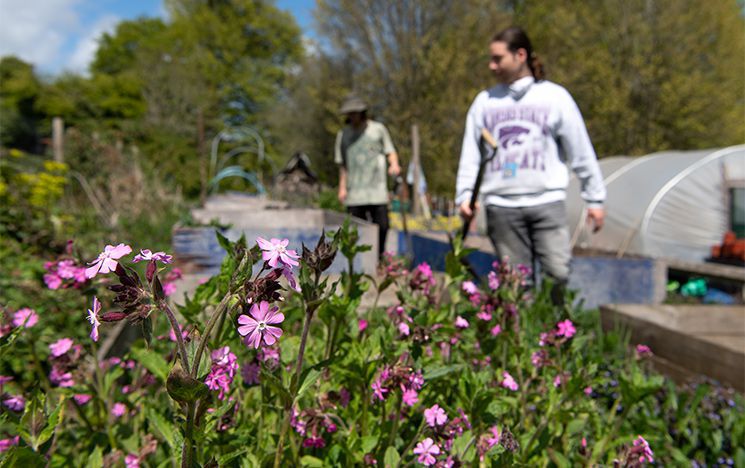
Run by the University of Sussex Students’ Union’s Roots Society, with a little help from Sussex Estates and Facilities plant specialist Jaci Driscoll, the University’s allotment provides comradeship, horticultural skills and a fair bit of organic produce for all those involved.
Its location has been something of a moveable feast, owing to continuing new developments and building work, and is now being established at the north end of campus, near the new Forest Food Garden.
Our Sustainability Strategy was launched in 2021 to encourage all staff and students to become more environmentally and ethically aware, with the vision to create one of the world’s most sustainable universities.
George the hawk
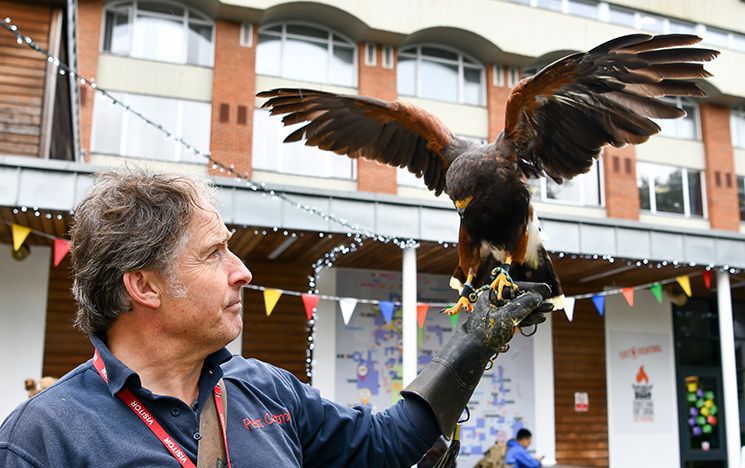
Among the most welcome visitors to campus is George the Hawk. Under the supervision of Gary Railton, he’s happy to sit on the hands of anyone not alarmed by his talons and beady stare.
But he’s not just a show attraction. Gary brings George to campus to scare away the herring gulls on campus, particularly during sunny days when outside diners often find their sandwiches snatched from their hands by the low-swooping thieves.
George is quite a celebrity in his own right, having been on Gary’s left hand in a number of prestigious locations, including the Houses of Parliament, where he was a favourite of David Cameron’s.
Seagull
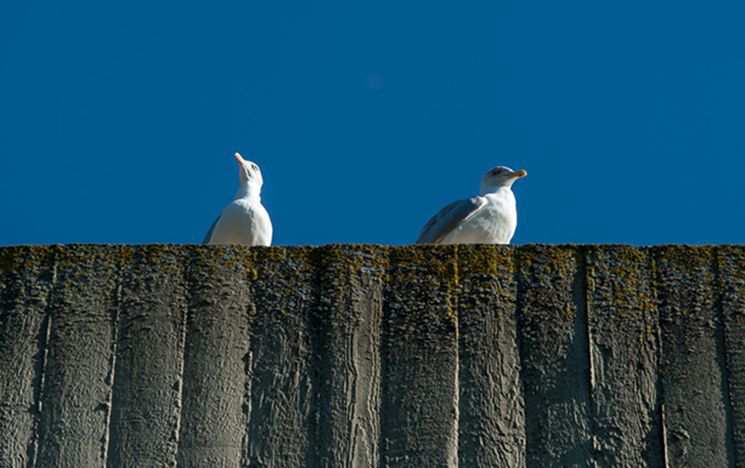
We might be a few miles from the sea, but seagulls – or more accurately herring gulls – have definitely made the University of Sussex campus their home.
They frequently nest on the conveniently flat roofs of our 1960s architecture, and their raucous cries, along with the pining calls of their demanding chicks, is a constant soundtrack across campus.
Mostly, we tolerate their company – unless they try to join us for an al fresco lunch. They have a cunning way of guilting us into sharing our sandwiches and will resort to sneaky thieving if we’re not looking. When convenience food is in short supply, they resort to ‘paddling’ our green lawns to encourage unwitting earth worms to the surface – who were expecting rain.